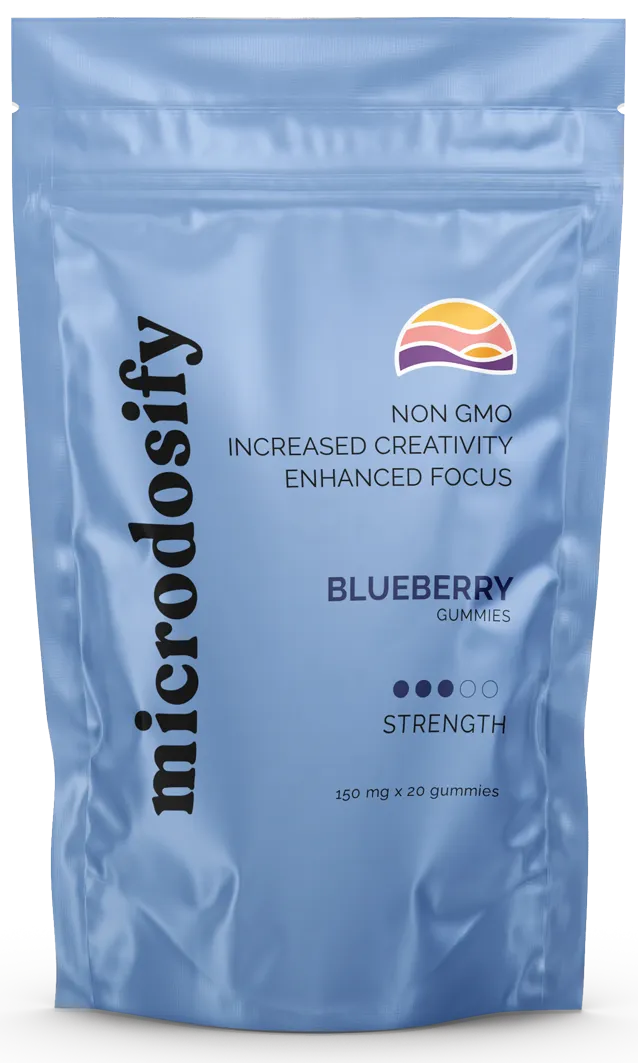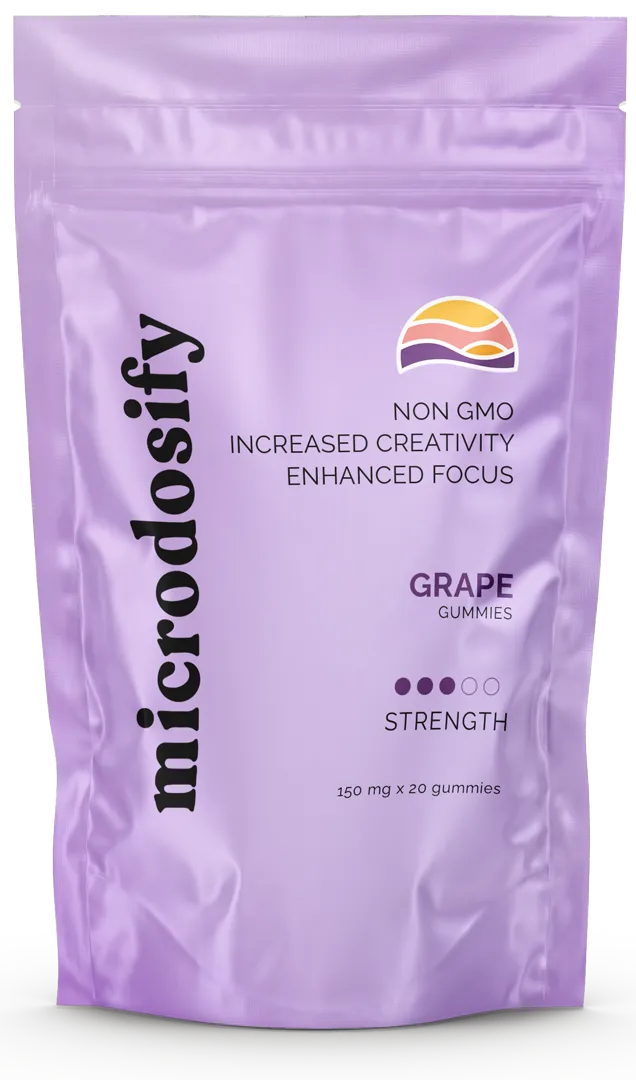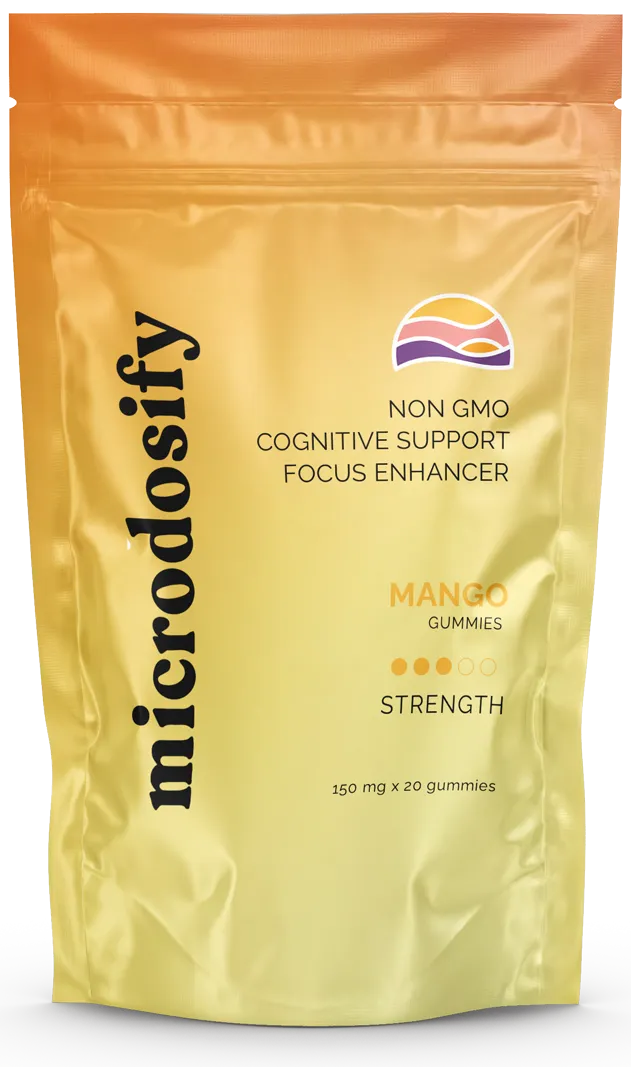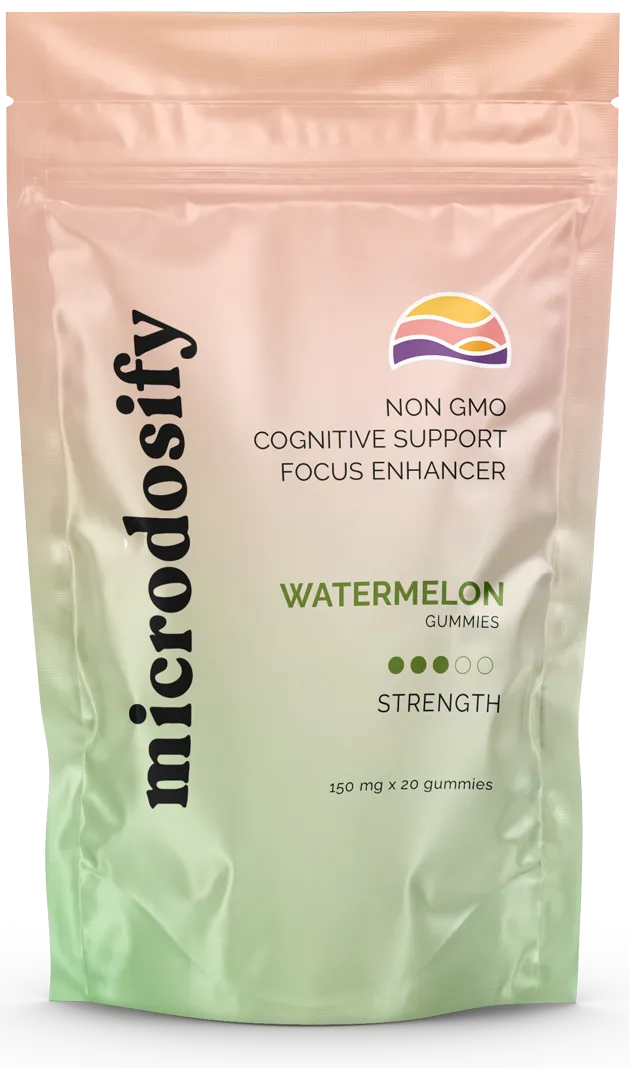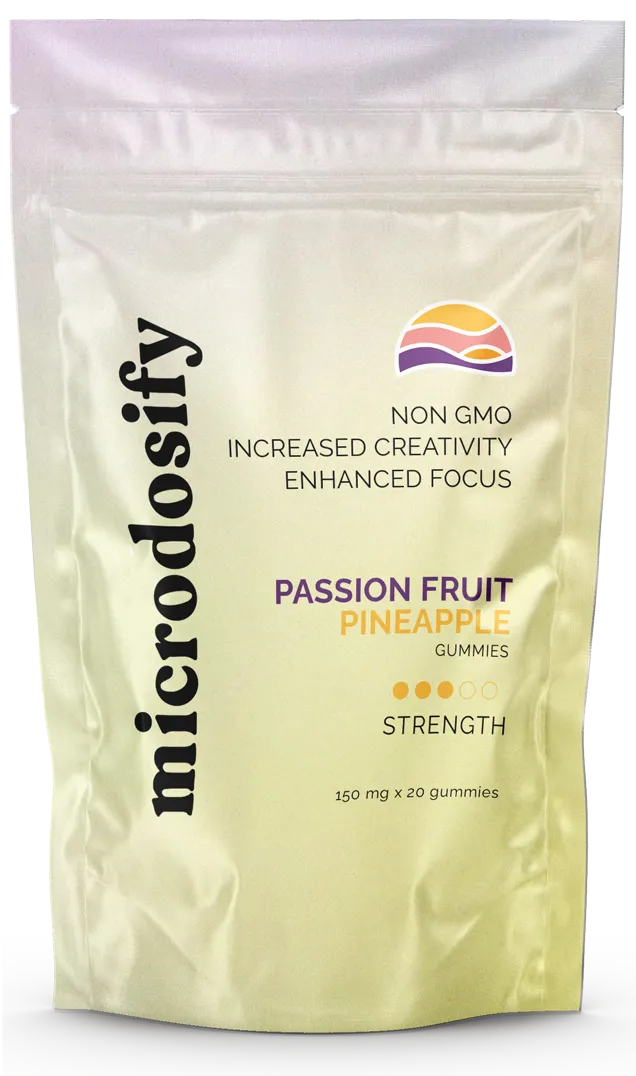Fadiman Protocol: Benefits, How to Follow and Potential Side Effects
Have you heard of the Fadiman Protocol? Developed by renowned psychologist Dr. James Fadiman, this protocol is gaining popularity in the world of microdosing therapy. But what exactly is it and how does it work?
In this article, we will explore the purpose of the Fadiman Protocol, how to follow it, the benefits it offers, as well as the potential risks involved.
Key Takeaways:
- The Fadiman Protocol is a popular method of microdosing psilocybin that aims to improve mood, focus, and overall well-being.
- Following the Fadiman Protocol involves taking small doses of psilocybin regularly and keeping track of progress through journaling.
- Consulting a medical professional and sourcing high-quality psilocybin are important steps for safely starting the Fadiman Protocol.
What is the Fadiman Protocol?
The Fadiman Protocol is a structured approach to microdosing, developed by James Fadiman, which involves taking small doses of psychedelic substances like psilocybin and LSD for therapeutic purposes.
This protocol has gained attention for its potential to enhance mental well-being, creativity, and productivity.
Who Developed the Fadiman Protocol?
The Fadiman Protocol was developed by James Fadiman, a renowned LSD researcher and an advocate for the study of psychedelics.

James Fadiman, who holds a Ph.D. in psychology from Stanford University, has been at the forefront of psychedelic research for over five decades. His groundbreaking work has significantly impacted the understanding and exploration of consciousness-altering substances.
Fadiman’s motivation for developing the microdosing regimen originated from his belief in the therapeutic potential of psychedelics when used responsibly. This protocol, which involves taking small doses of psychedelics over extended periods, aims to enhance creativity, focus, and overall well-being without inducing a full psychedelic experience.
What is the Purpose of the Fadiman Protocol?
The primary purpose of the Fadiman Protocol is to enhance emotional well-being, boost creativity, and improve productivity through controlled microdosing.
By utilizing microdosing methods, individuals aim to optimize their cognitive functions, elevate mood levels, and tap into their creative reserves without experiencing the full psychedelic effects.
This protocol is often sought after for its potential to manage anxiety, depression, and PTSD and enhance overall mental wellness. The controlled intake of substances like LSD or psilocybin under the Fadiman Protocol is believed to stimulate neuroplasticity, leading to improved focus, problem-solving abilities, and heightened sensory perception.
How Does the Fadiman Protocol Work?
The Fadiman Protocol works through a structured microdosing regimen that involves a specific dosing schedule to maximize the positive effects while minimizing tolerance build-up.
The protocol typically consists of a dosing schedule that involves taking sub-perceptual doses of psychedelics every few days.
This specific regimen allows individuals to experience the benefits of microdosing without the risk of developing a tolerance to the substance. By spacing out the doses this way, users aim to maintain consistent benefits such as improved mood, creativity, and mental clarity.
How to Follow the Fadiman Protocol?
Following the Fadiman Protocol involves sticking to a carefully designed microdosing protocol that specifies the dose and frequency of psychedelic substances to avoid tolerance and maximize benefits.
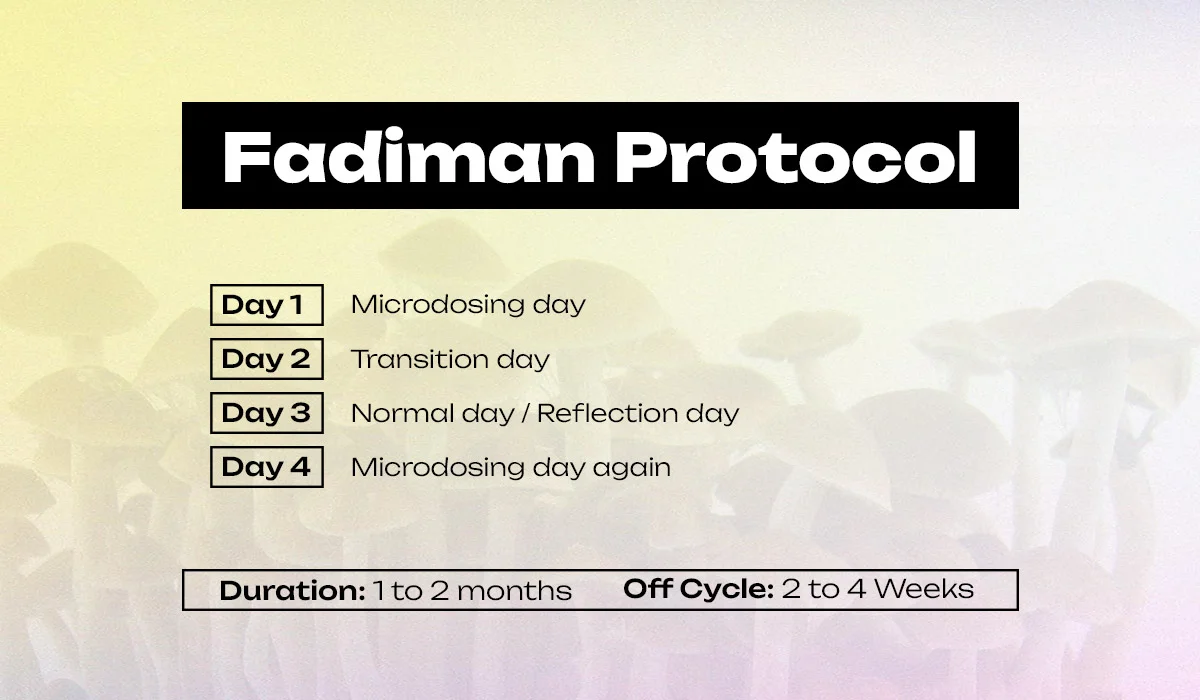
What is the Recommended Dosage for the Fadiman Protocol?
The recommended dosage for the Fadiman Protocol typically involves taking a small, sub-perceptual dose of psilocybin mushrooms or LSD.
Sub-perceptual doses are often defined as amounts low enough not to induce intense or noticeable psychoactive effects. For psilocybin mushrooms, this may mean consuming around 0.1-0.3 grams of dried mushrooms. Similarly, with LSD, a sub-perceptual dose could be around 10-20 micrograms.
It is crucial to stick to these dosage guidelines to experience the potential therapeutic benefits without encountering overwhelming psychedelic sensations. By staying within sub-perceptual limits, users can integrate these substances into their routine while minimizing the risk of adverse reactions.
How Often Should the Fadiman Protocol be Followed?
According to the Fadiman Protocol, microdosing should be followed on a specific dosing schedule that typically involves dosing every three days.
This dosing interval of every three days is strategically designed to allow for:
- Prevent Tolerance Build-up: By spacing out the doses, it helps prevent the development of tolerance to the substance, ensuring that the effects remain consistent over time.
- Integration and Reflection: Taking a break between doses allows for integrating experiences and reflecting on the effects of the previous microdose.
- Minimization of Side Effects: Giving the body time to reset between doses reduces the likelihood of experiencing any side effects of continuous dosing.
- Long-term Sustainability: This dosing regimen aims to promote long-term sustainability and effectiveness of microdosing by maintaining the benefits while minimizing potential drawbacks.
What is the Ideal Time to Take Microdoses?
The ideal time to take microdoses in the Fadiman Protocol is usually in the morning to align with the body’s natural rhythms and enhance daily productivity and well-being.
This timing is crucial as it allows the body to absorb the microdose early in the day, providing a steady and sustained effect throughout the hours ahead.
By microdosing in the morning, individuals can enjoy the natural peak levels of alertness and focus during this time, thus maximizing the medicine’s cognitive benefits.
What Are the Benefits of the Fadiman Protocol?
The Fadiman Protocol offers numerous potential benefits, including improved mood, enhanced creativity, increased focus, and better emotional and mental well-being, making it a powerful tool for therapeutic purposes.
Improved Mood and Creativity
One of the most commonly reported benefits of the Fadiman Protocol is an overall improvement in mood and a significant boost in creativity.
Individuals who have embraced microdosing often describe feeling more emotionally balanced and resilient, with a heightened sense of positivity that permeates their daily experiences. This positive shift in mood is not just anecdotal; studies have shown that microdosing can lead to increased levels of serotonin and dopamine, neurotransmitters associated with feelings of happiness and well-being.
Regarding creativity, microdosers frequently report enhanced divergent thinking, a key component of creative problem-solving. This ability to think outside the box and connect seemingly unrelated ideas has led many to breakthroughs in their artistic endeavors, business projects, or personal pursuits.
Increased Focus and Productivity
Microdosing, according to the Fadiman Protocol, can increase focus and productivity, which is particularly beneficial for individuals in high-demand environments like Silicon Valley.
This method involves consuming small doses of substances like LSD or psilocybin to enhance cognitive functions without inducing hallucinations.
The practice of microdosing has gained popularity among tech entrepreneurs and professionals seeking a competitive edge in their work.
Research suggests that microdosing may positively impact mood, creativity, and problem-solving abilities, making it a compelling option for those looking to optimize their performance.
Enhanced Emotional and Mental Well-being
The Fadiman Protocol is praised for its ability to enhance emotional and mental well-being, offering a powerful approach to therapeutic purposes.
One of the key benefits of following this protocol is highlighted in the realm of microdosing, a method where small doses of substances like psychedelics are consumed. Research suggests that microdosing under the Fadiman Protocol may help individuals experience enhanced mood regulation, increased creativity, and a sense of overall well-being.
Clinical trials have shown promising results in terms of its potential in alleviating symptoms of anxiety, depression, and PTSD. User testimonials often speak of profound personal growth, improved relationships, and a greater sense of connection with oneself and others.
Reduced Anxiety and Depression Symptoms
Many individuals following the Fadiman Protocol report a reduction in anxiety and depression symptoms, making it a promising alternative treatment option.
Through the meticulous dosing schedule that characterizes microdosing, individuals have found that they experience a subtle but consistent improvement in their overall mood and mental well-being.
Studies have shown that the psychedelic compounds in microdosing can have a positive impact on serotonin receptors, which are closely linked to mood regulation.
Anecdotal evidence from those who have incorporated microdosing into their routine suggests a newfound sense of clarity and emotional stability.
What Are the Risks of the Fadiman Protocol?
While the Fadiman Protocol offers numerous benefits, there are also potential risks involved, including negative side effects and possible legal consequences associated with the use of psychedelic substances.
Potential for Negative Side Effects
One of the risks of following the Fadiman Protocol is the potential for negative side effects, especially if the microdosing regimen is not followed correctly, leading to tolerance or other issues.
Proper dosing is crucial when it comes to microdosing, as inconsistent or excessive intake could lead to adverse effects on one’s mental and physical health.
Improper dosing may not only result in the development of tolerance to the substance being used but also increase the risk of experiencing undesired side effects.
Individuals experimenting with microdosing should be vigilant and cautious to ensure they are not inadvertently causing harm to their bodies. It’s essential to stay informed and seek guidance from healthcare professionals to minimize any potential risks associated with this practice.
How to Get Started with the Fadiman Protocol?
Getting started with the Fadiman Protocol involves several important steps, including consulting with a medical professional, finding a reliable source for psilocybin mushrooms or other substances, and keeping a detailed journal to track your microdosing journey.
Consult with a Medical Professional
Before starting the Fadiman Protocol, it is crucial to consult with a medical professional to ensure it is appropriate for your therapeutic purposes and overall health.
During the consultation, your healthcare provider can assess your medical history, current medications, and any underlying health conditions that may impact your response to microdosing.
It is important to inquire about potential side effects, medication interactions, and the optimal dosage range for your specific needs and goals.
Discussing your mental health concerns, such as anxiety or depression, can help determine if microdosing is a suitable complementary treatment.
Source High-Quality Psilocybin
Sourcing high-quality psilocybin is a critical step in the Fadiman Protocol to ensure safety and effectiveness.
Regarding procuring psilocybin mushrooms, one of the most reliable methods is to cultivate them yourself. This way, you have full control over the growing process, ensuring purity and quality. If self-cultivation is not an option, it’s important to source mushrooms from reputable suppliers or trusted individuals with a track record of providing authentic products. Conducting thorough research on the supplier and reading reviews and testimonials can give you insights into the reliability of their products.
Another essential aspect is verifying the purity of the mushrooms. This can be done through various methods, such as testing kits that detect the presence of psilocybin and other compounds. Opting for mushrooms that have been tested in a laboratory for potency and contaminants can provide an extra layer of assurance. Remember, prioritizing the safety and quality of the psilocybin mushrooms is crucial for a positive and beneficial experience.
Keep a Journal to Track Progress
Keeping a journal, often called a diary, is essential for tracking your progress and observing the effects of microdosing according to the Fadiman Protocol.
Recording key details such as the medicine used, dosage, time of intake, and any notable effects can provide valuable insights into how your body responds to microdosing over time.
By consistently documenting your experiences, you can identify patterns, adjust your dosage as needed, and make informed decisions for optimizing your microdosing regimen.
A well-maintained journal serves as a personal roadmap, helping you navigate through the ups and downs of your microdosing journey with clarity and purpose.
Frequently Asked Questions
What is the Fadiman Protocol?
The Fadiman Protocol is a method of microdosing psychedelics, specifically psilocybin, developed by Dr. James Fadiman. It involves taking a small, sub-perceptual dose of psychedelics on a regular schedule to improve overall well-being.
How does the Fadiman Protocol work?
The Fadiman Protocol is based on the idea of taking a small dose of psychedelics every three days. This allows for a subtle shift in perception and mood without experiencing a full psychedelic trip. It is believed that this method can enhance creativity, focus, and emotional well-being.
What are the benefits of following the Fadiman Protocol?
Many people who have followed the Fadiman Protocol report improved mood, increased creativity, and a greater sense of self-awareness. It has also been shown to help with anxiety, depression, and PTSD.
Is the Fadiman Protocol safe?
The Fadiman Protocol is generally considered safe when followed correctly. However, as with any use of psychedelics, it is important to approach with caution and be mindful of your own physical and mental well-being.
Can anyone follow the Fadiman Protocol?
The Fadiman Protocol can be followed by anyone, but it is important to consult with a healthcare professional before beginning any new treatment. It is not recommended for those with a history of mental health issues or those who are pregnant or breastfeeding.
How can I learn more about the Fadiman Protocol?
To learn more about the Fadiman Protocol and how it may benefit you, it is recommended to do your own research and consult with a healthcare professional. The Microdosify community also offers resources and support for those interested in microdosing and the Fadiman Protocol.

By Rachel Grey
I’m Rachel Grey, a Ph.D. psychologist specializing in psychedelic therapy with psilocybin and natural plant medicines. I obtained my doctorate from the University of Toronto, where I immersed myself in the study of these transformative therapies. With over 10 years of experience, let’s embark on transformative journeys of healing, growth, and self-discovery as we explore the power of psychedelic therapy together.




